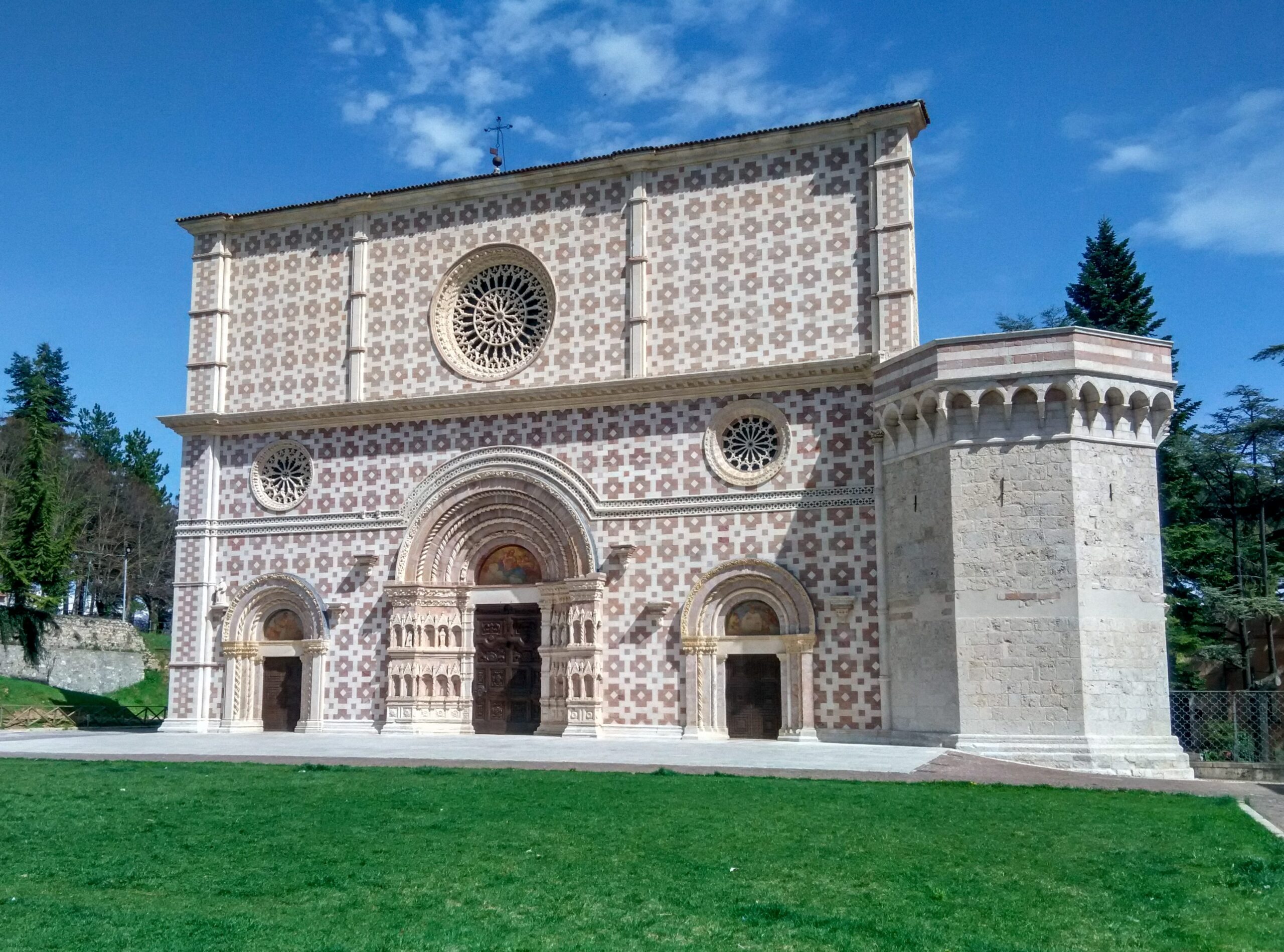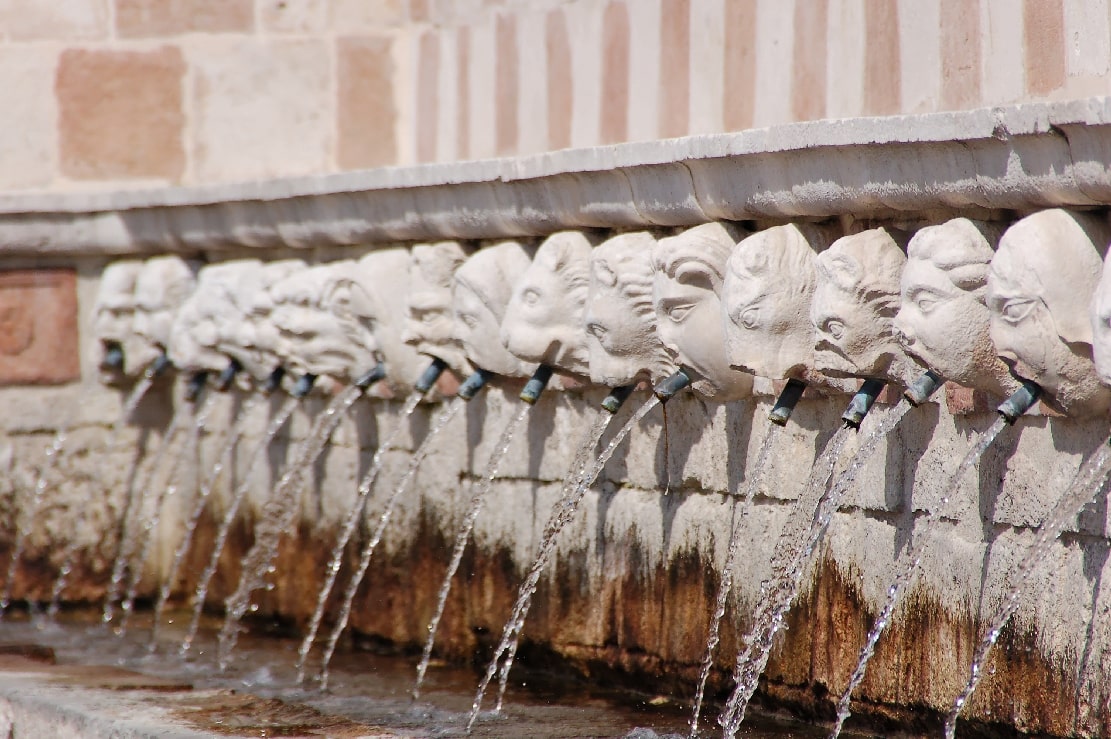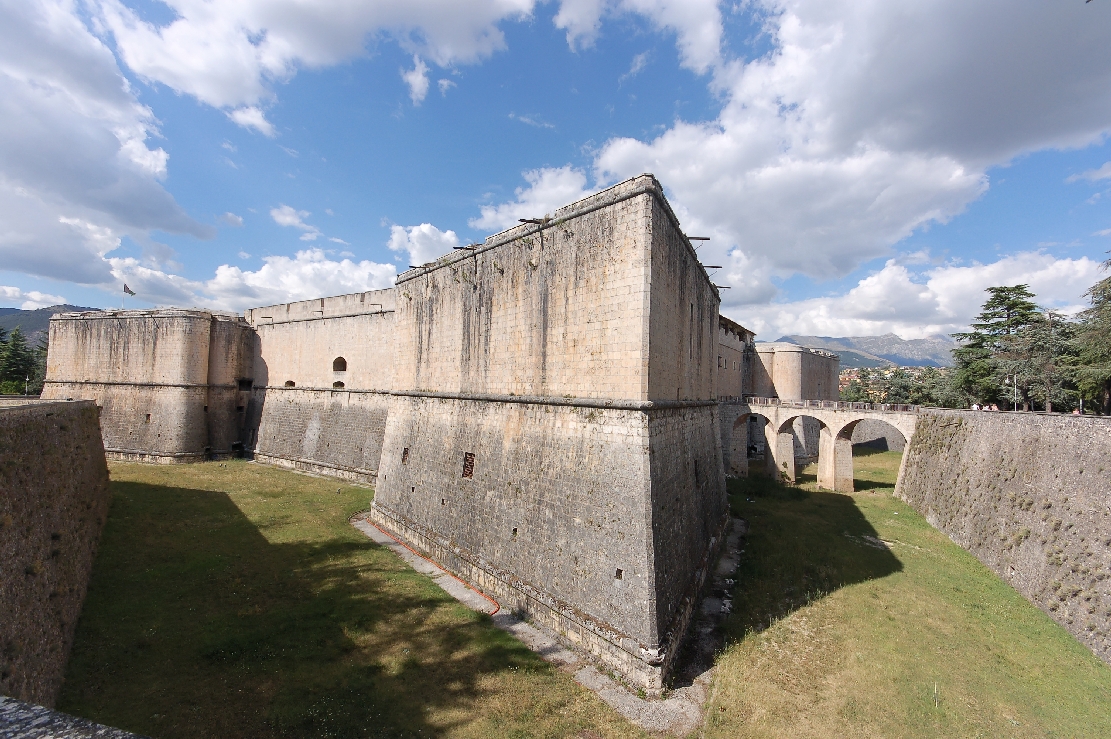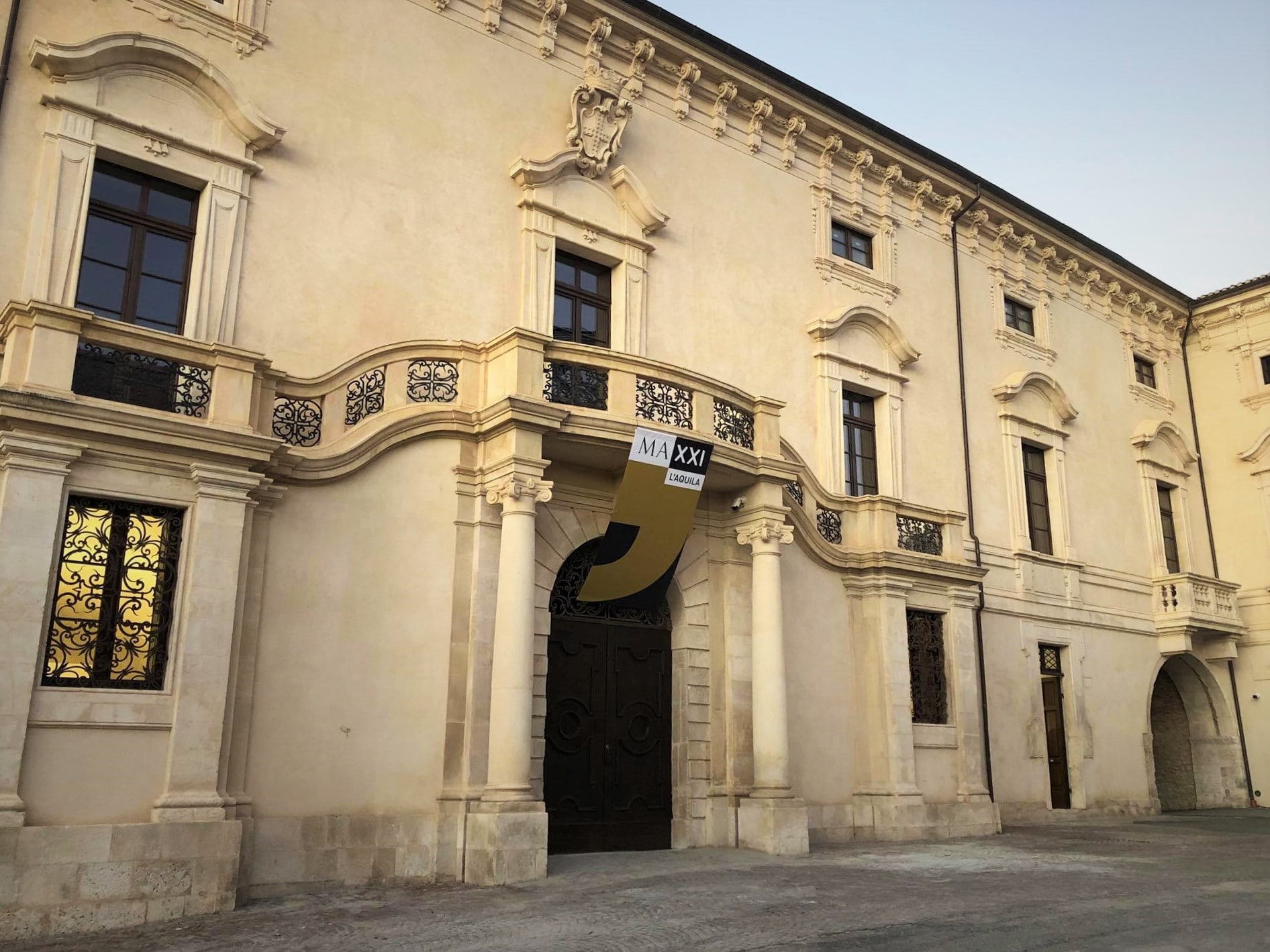





L'Aquila
The station ofAquila is the most important of the seven stations in the municipality of L’Aquila.
It is located southwest of the city's historic center, just outside the walls and not far from Borgo Rivera district, where the famous Fountain of the 99 Spouts is located.
It was inaugurated in 1875 as a temporary terminus of the railway coming from Pescara; the line was fully inaugurated, that is, all the way to Terni, in 1883, while in 1888 the Pescara-Sulmona section was dismantled and added to the connecting line of the city of Sulmona with Rome.
L'Aquila, the capital of the Abruzzo Region, is situated on a vast plateau crossed by the river Aterno and dominated by the Gran Sasso d'Italia, which at 2912 meters is the highest peak of the Apennines.
To preserve the natural environment of the Abruzzo mountains, the Gran Sasso and Monti della Laga National Park was established in 1991, which also covers part of the municipal territory of the city.
The toponym "Aquila" derives from Acculi, a castle now corresponding to the current Borgo Rivera, so named because it was located near an area rich in springs and was designated for the foundation of the city.
It was founded in 1254 with the consent of Conrad IV of Swabia: in fact, the inhabitants rebelled against the heavy feudal condition imposed by the Norman-Swabian baronies. The events of the foundation, as well as the early history of the city, are narrated by the vernacular pen of Buccio di Ranallo, a local author.
A prominent figure in medieval history was Pietro da Morrone, who became Pope Celestine V. His figure is linked to the famous Basilica of Collemaggio, which houses the remains of the pontiff, crowned here on 29 August 1294. Even today, on this day, plenary indulgence is distributed, the central event of the "Aquila indulgence".
The Renaissance period saw the passage of many painters, sculptors, and architects, who embellished the Abruzzo capital, giving it the conformation that we can still appreciate today. During the sixteenth century, the city hosted a rich community of Flemish painters: evidence of this historical event can be found in the works of Aert Mytens, known by the pseudonym Rinaldo Fiammingo.
A masterpiece of art from the sixteenth to seventeenth centuries is the Basilica of San Bernardino, erected in the Santa Maria district and dedicated to the Sienese saint, whose remains are preserved inside a precious architectural treasure created by Silvestro dell’Aquila.
After the unification of Italy, L'Aquila was entrusted with the role of capital of Abruzzo and Molise.
In 1927, Mussolini launched the "Grande Aquila" project, which involved the merger of 8 municipalities and the San Vittorino fraction, in the municipality of Pizzoli, with the Abruzzo capital. From a political point of view, this entailed not only territorial redistribution but also political reorganisation. We are facing the first political nucleus of the present-day municipality.
In L'Aquila, it is possible to visit the historical and artistic heritage preserved in the city's numerous museums.
The National Museum of Abruzzo, temporarily relocated to the former slaughterhouse of Borgo Rivera following the 2009 earthquake, houses a rich collection ranging from the 1st century BC to the 19th century: from archaeological finds to nineteenth-century art. A similar fate of re-functionalization has also befallen the eighteenth-century Palazzo Ardinghelli. After the necessary post-earthquake restoration, it reopened to the public as MAXXI L'Aquila, the detached branch of the Museum of 21st Century Arts in Rome. In addition to hosting a permanent collection, partly from the eponymous Roman museum, monthly temporary exhibitions are held featuring works tailored for that specific place and space.

Project by Riattivati Youth Cultural Association
With contributions from: FAI – Fondo per l’Ambiente Italiano ETS, INTESA SANPAOLO, Rotary Club Rieti
Thanks To the promotion comittee: Amici di Rieti, Associazione Culturale Giovanile Riattivati, Rotary Club Rieti e Associazione Collezionisti “Sabatino Fabi”
